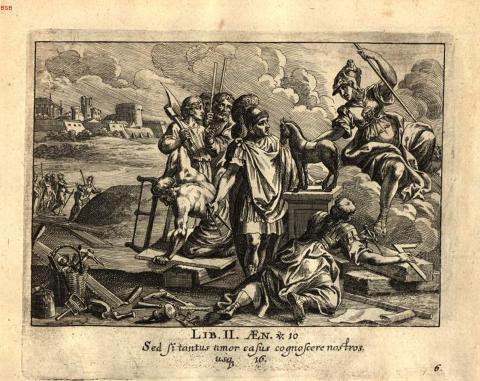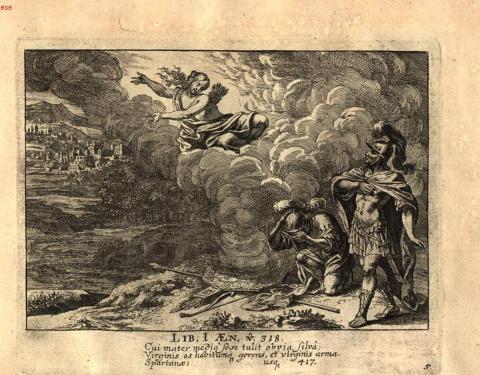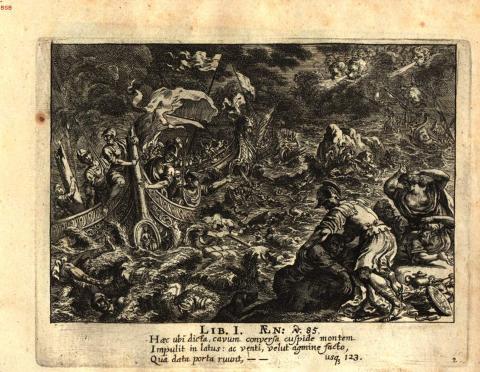Eimmart: The building of the Trojan Horse
Annotations
Athena brings (or Epeos shows) the model of the wooden horse; craftsmen are busy trying to build the wooden horse.
Athene bringt oder zeigt Epeos das Modell des Hölzernen Pferdes; Handwerker sind damit beschäftigt, das Hölzerne Pferd zu bauen. (Suerbaum)
Engraving from a German children’s picture-book version of the Aeneid by G. J. Lang and G. C. Eimmart, “A tapestry of Roman virtues as seen in Vergil’s Aeneas and his brave deeds, rendered in sparkling engravings, as illustrations of the remarkable deeds of antiquity, for the common benefit of noble youth,” (Peplus virtutum Romanarum in Aenea Virgiliano eiusque rebus fortiter gestis, ad maiorem antiquitatis et rerum lucem, communi iuventutis sacratae bono, aere renitens) (Nuremburg: J.L. Buggel, 1688), pl. 6.







This scene takes place at the beginning of Aeneas’ description of his wanderings to Dido. In the center of the picture is Epeos, holding a caliper in his right hand and examining a model of the wooden horse he intends to build. Athena, resting on a cloud on the right of the picture leans towards Epeos, gesturing towards the miniature horse (which seems to have a trap door built in). Athena is recognizable by her helmet and the medusa on her aegis. The men collected around Epeos have a number of woodworking tools, including saw, axe, and caliper. There are planks of wood lying about and in the bottom left are strewn a number of other tools. In the background is Troy itself. (Lucy McInerney)